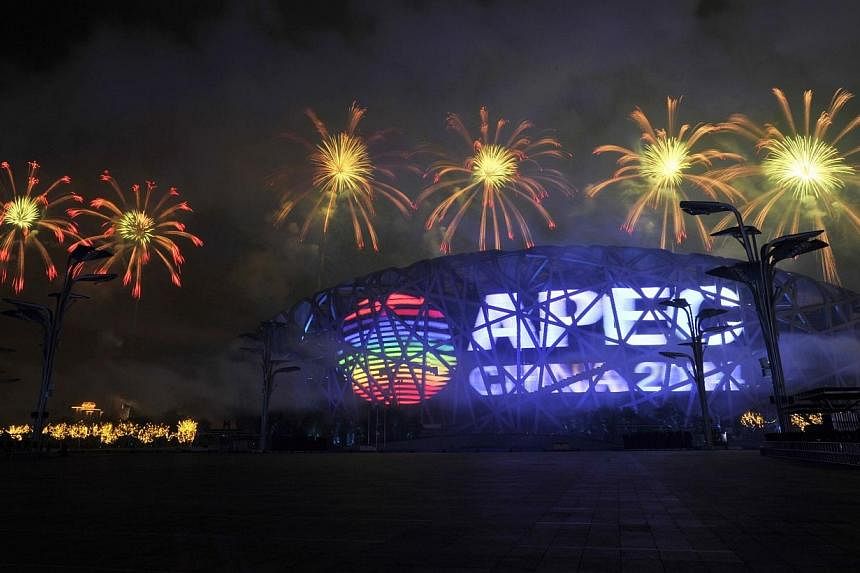The Asia-Pacific Economic Cooperation (Apec) is a forum that seeks to promote free trade and economic cooperation throughout the region.
A wide range of issues are expected to be addressed at the forum's ongoing week-long meetings in Beijing, culminating in a summit among leaders of the forum's 21 member economies on Nov 10 and 11.
Here are some of the key issues:
1. Free Trade Area of the Asia-Pacific (FTAAP)
As host of this year's Apec summit, China is pushing for the launch of a feasibility study on the FTAAP, an Asia-Pacific regional free trade area.
The study is typically seen as an opening move in negotiations but is reportedly facing resistance from Apec members including the United States and Japan, which are spearheading a rival free trade deal currently being negotiated.
This is the US-led Trans Pacific Partnership (TPP), which encompasses 12 economies such as Japan and Singapore but excludes China.
2. Connectivity
Apec member economies are drawing up a new regional connectivity blueprint to bring markets, businesses and people closer together so as to facilitate trade and investment that can result in greater long-term growth.
This involves physical infrastructure needs and deeper institutional and people-to-people links.
Together, Apec members are hoping to achieve a 10 per cent improvement in supply chain performance by next year.
Moving along the process are simplification of customs and immigration procedures, standardisation of industry regulations and standards, and cutting of administrative costs for things such as permits and shipping containers.
3. Anti-corruption network
A regional anti-corruption network, likely based in China, is expected to be signed at the Apec meetings.
Seen as a plan for China to extend its domestic anti-graft campaign internationally so as to be able to go after dirty officials who have fled overseas with their ill-gotten gains, it will involve a plan for information-sharing.
4. Global issues
Besides trade, the agenda of Apec world leaders this year is likely to feature pressing issues on which concerted global action is needed yet momentum severely lacking, namely, Ebola and the Islamic State in Iraq and Syria (ISIS).
In an echo of the last time China hosted Apec in 2001, when the grouping adopted a counter-terrorism statement for the first time in the shadow of the Sept 11, 2001 terrorism attacks on the United States, Washington is likely to push for greater international support among Apec members for its battle against ISIS militants.
APEC SPEAK
- Bogor goals
Apec set a target, first expressed during the 1994 Apec summit in Indonesia's Bogor city, of achieving free and open trade and investment in the Asia-Pacific region by 2020.
Industrialised members were meant to achieve this by 2010 and developing economies by 2020.
This year marks the 20th anniversary of the Bogor goals.
- Pacific Economic Cooperation Council (PECC)
Founded in 1980, the PECC is a non-profit international organisation committed to the promotion of cooperation and dialogue in the Asia Pacific.
It provides independent business and research input for the regional policy-making process.
- Free Trade Area of the Asia-Pacific (FTAAP)
The idea of a FTAAP - an Asia-Pacific regional free trade area - was first floated in 2004 as a long-term vision for both Apec economies and the world economy.
This year, it is again under the spotlight as China pushes to launch a feasibility study for the FTAAP at this year's Apec meetings.
It is, however, said to be facing resistance from Washington and Tokyo which are backing the US-led free trade pact known as the Trans-Pacific Partnership instead.
- Regional Comprehensive Economic Partnership (RCEP)
A proposed free trade agreement (FTA) involving 16 countries. They include the 10 Asean countries (Indonesia, Malaysia, the Philippines, Singapore, Thailand, Brunei, Cambodia, Laos, Myanmar and Vietnam) and Asean's FTA partners: China, Japan, Korea, India, Australia and New Zealand.
The RCEP takes into consideration the different levels of development of the participating countries and will include appropriate forms of flexibility. It is expected to be concluded by end-2015.
- Trans Pacific Partnership (TPP)
Said to be a "high-standard, 21st-century agreement", the TPP is a proposed free trade pact that involves the US, Australia, Japan, Brunei, Canada, Chile, Malaysia, Mexico, New Zealand, Peru, Singapore and Vietnam. It does not include China.
The TPP entails deeper regulatory convergence among members in areas such as investment, competition policies, intellectual property rights enforcement, state-owned enterprises (SOEs), labour and environment.
China has been cautious on joining TPP talks as issues such as SOEs and environmental standards would impose very high costs on its domestic industries.

